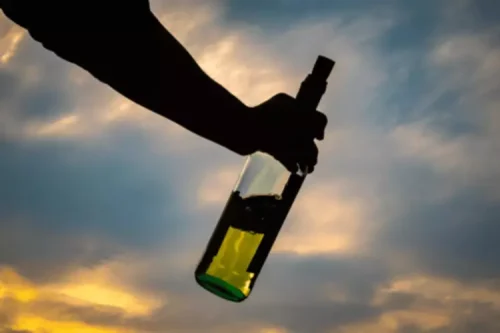
From stress management techniques to communication skills, these programs ensure that individuals can navigate daily challenges effectively. Alcohol treatment centers provide structured environments to address both the physiological and psychological aspects of recovery. A multitude of programs and treatments exist, tailored to individual needs, ensuring that every person can find an approach that resonates dry drunk syndrome best with their unique situation.

Symptoms of Having Dry Drunk Syndrome or PAWS
- Dry Drunk Syndrome is a slang expression derived from the 12-Step fellowship and AA Big Book.
- The dry drunk, like anyone seeking to overcome addiction, has to genuinely want recovery over everything else.
- Rather than just focusing on abstaining from alcohol, an exhaustive rehabilitation process should be in place.
- Time spent drinking alcohol or recovering from drinking is available, and finding ways to fill it can be an important step forward.
A person with dry drunk syndrome is someone who has achieved and maintains sobriety but still exhibits many of the same behaviors from when they were actively drinking. It is crucial to note that, while not an official diagnosis, if a loved one exhibits the characteristics of a dry drunk, it is a sign they may need help to avoid relapse. Untreated alcoholism is a significant public health concern in the U.S., but many individuals can benefit from treatment, regardless of severity. While traditional 30-day rehabs and 12-Step programs are well-known, there are numerous other effective treatments available.
- Yet, supporting someone who is a dry drunk is absolutely paramount, if there’s ever any chance of that person’s eventual successful recovery.
- Old patterns of thinking and behavior, such as minimizing, rationalizing, or denying problems, can resurface, undermining recovery efforts.
- No one should assume the information provided on Addiction Resource as authoritative and should always defer to the advice and care provided by a medical doctor.
- You might also experience a complicated recovery that’s characterized by dry drunk episodes.
Critics of the Term Dry Drunk

Additionally, attending Alcoholics Anonymous meetings can provide a supportive network to those on the road to recovery. Finally, engaging in healthier activities such as exercise, mindfulness practices, or creative hobbies can help to reduce stress and improve overall mental wellness. If you are sober and feeling fulfilled and happy, preventing dry drunk syndrome involves continuing to engage in a daily routine of recovery. For that reason, simply quitting substances without changing one’s lifestyle or other behaviors and thought processes simply isn’t enough. Taking away the substance doesn’t fix the problem that the addict or alcoholic was trying to solve through the use of the substance in the first place. When someone doesn’t replace their addiction with a healthy pattern of living or a new solution to dealing with life, they can end up feeling empty, discontent, and full of anguish.

What to Know About Dry Drunk Syndrome
They may tell themselves they’re not hurting themselves or anyone else. The chemical name ethanol sometimes refers to alcohol, a depressant drug active ingredient in drinks such as beer, wine, and distilled spirits (hard liquor). Dry drunk syndrome, sometimes called “white-knuckling,” can occur if you abstain from drinking, but This could lead to an even bigger problem. Substituting alcohol dependence for another addiction due to unresolved trauma.
For many people who suffer from addiction, drugs and alcohol are temporary “solutions” to these problems, before they become bigger problems themselves. Knowing the individualized circumstances that led to developing alcohol use disorder will also help a person gain some insight into how to deal with dry drunk syndrome. It may also be helpful to know that the symptoms of dry drunk syndrome are part of post-acute withdrawal syndrome (PAWS).
Set Recovery Goals

Attendance at therapy appointments and self-help meetings isn’t enough for some people in recovery. They have to commit to therapy and have faith that it will help them if they want to overcome dry drunk syndrome and enter recovery. Take our free, 5-minute substance abuse self-assessment below if you think you or someone you love might be struggling with substance abuse or relapse. The evaluation consists of 11 yes or no questions that are intended to be used as an informational tool to assess the severity and probability of a substance use disorder. The test is free, confidential, and no personal information is needed to receive the result. Living with dry drunk syndrome can be incredibly difficult for both the drug addiction person struggling with it and their family.
- Years of alcohol and drug abuse almost mold it into addiction’s nature.
- Self-care is a critical aspect of recovery and managing dry drunk syndrome.
- The 12-step recovery community’s early circles are where the colloquial term “dry drunk syndrome” first appeared.
- A person with dry drunk syndrome is someone who has achieved and maintains sobriety but still exhibits many of the same behaviors from when they were actively drinking.
- Recovery requires the creation of a new life where it’s easier not to drink or use substances.
Finding a counselor who works for you is a perfect start, in fact, it would be even better to have that form of counseling connected to treatment. If you have noticed, many of these symptoms may be similar to that of being dry drunk. In the next section, we will discuss co-occurring disorders and why they are important to understand. Participating in a recovery support program can provide support, clarity, and understanding into the underlying causes of addiction and how to manage them.
